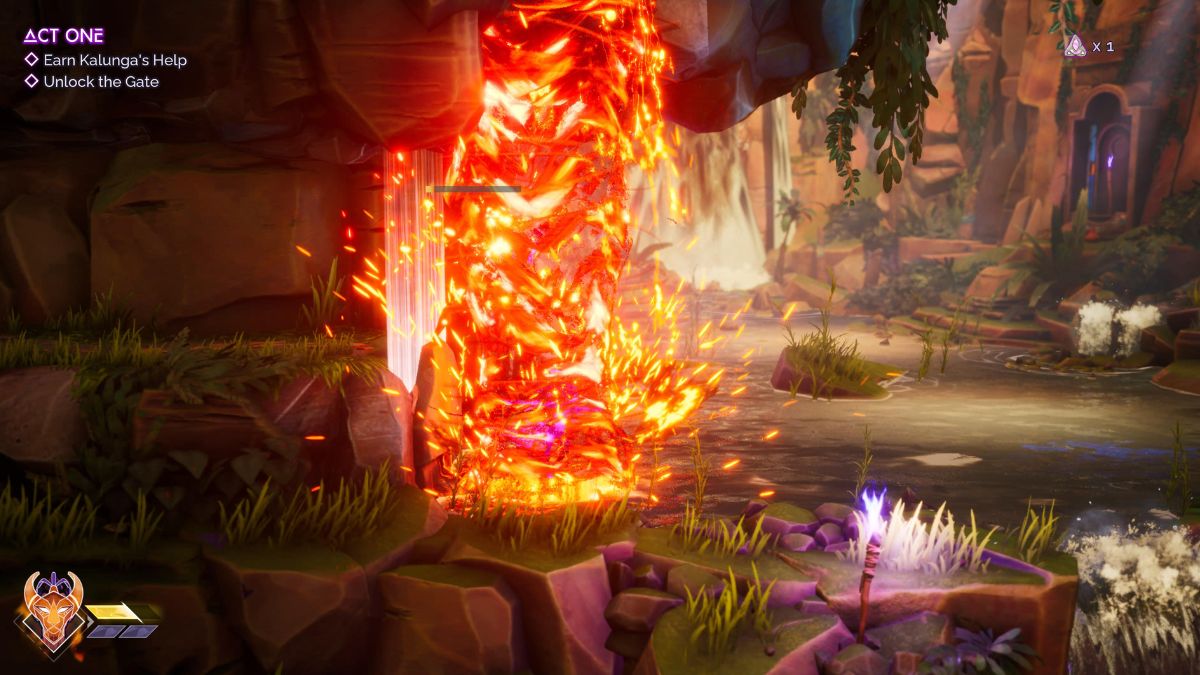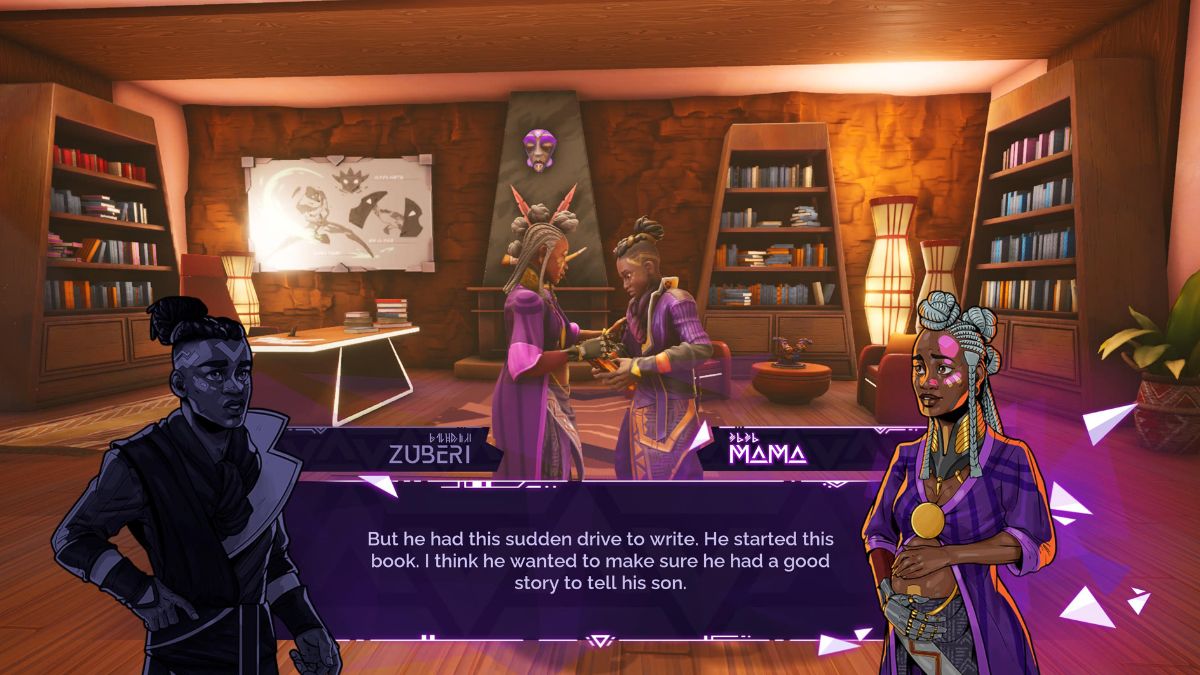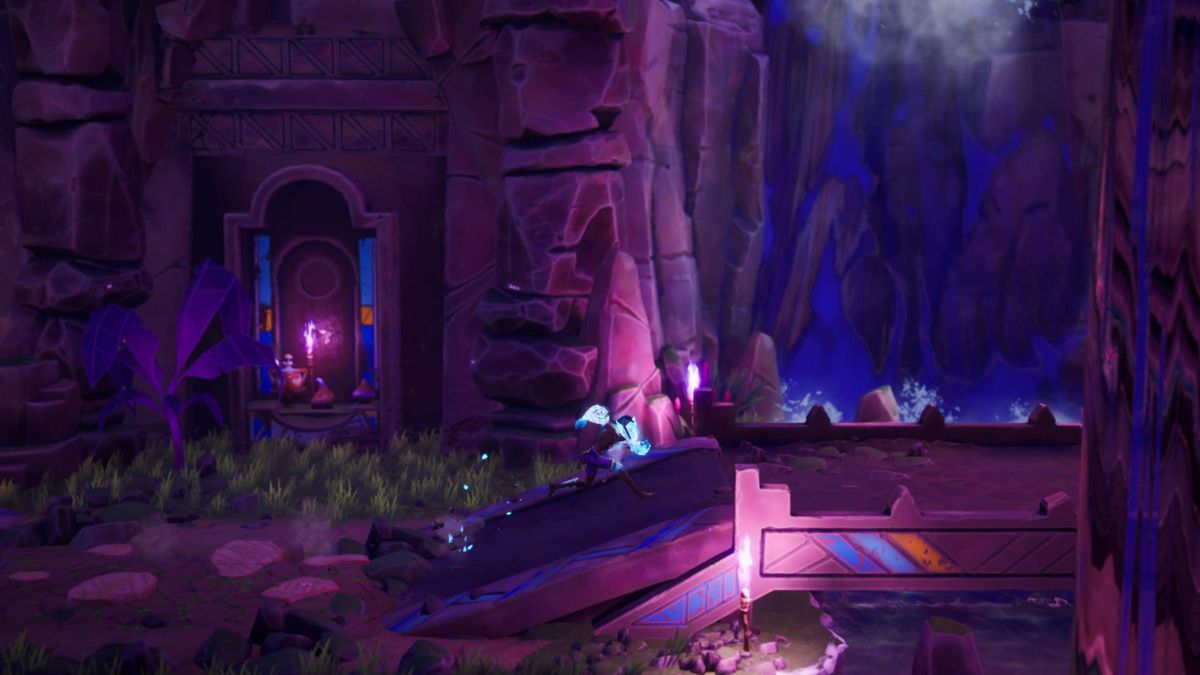Despite having only spent a few hours with Tales of Kenzera: Zau, it’s already got its hooks in me. Developer Surgent Studios’ debut game uses the metroidvania genre as an engine, establishing its unique vision for those typical staples thoughtfully implemented and iterated on through its compassion for the world of Kenzera.
The opening of Tales of Kenzera: Zau establishes its driving narrative themes and tone from the word go. You’ll begin with a young boy, Zuberi, who has just lost his father, left navigating the myriad of emotions that come with that, but he finds a way to explore his grief through the words his father left him in a book. That book tells the tale of Zau, a young shaman who makes a deal with the god of death to bring his father back, but for a price.
A fiercely satisfying and comforting tale of love

The meat of Tales of Kenzera: Zau is exploration and combat. There’s a massive world to explore and dozens of enemies to fight, but you’ve got to combine movement and firepower to master every foe you’ll encounter. Luckily, Zau has a couple of tricks up his sleeve.
In battle, you’ll switch between two masks: The Mask of the Moon and the Mask of the Sun. Using the Mask of the Moon, you can blast enemies with ranged attacks and move much faster between close encounter hits. The Mask of the Sun offers stronger attacks and a shorter combo, but you can juggle enemies across rooms by timing attacks well.
Spirit Attacks add more substance to fights, seeing you blast enemies with a moonbeam or create a fiery sun tornado to burn them away. There’s enough here to not feel overwhelming, but early on, it can give you the sense that combat doesn’t have much depth to it. That depth comes later when enemies present new mechanics, such as shields with multiple health bars.
At its heart, though, this is a metroidvania in every sense of the word. You must explore the map and build up a memory of where every unsolved puzzle, locked path, and door requiring a key is located. Then, when you find the solutions or an ability that allows you to progress later, you can head back and continue exploring where you know you were stopped.
In this way, Tales of Kenzera: Zau is incredibly familiar, but the world and narrative woven throughout give it a vibrancy and life that I haven’t felt for the genre in a long time. There’s a care to balance here. There are no levels upon levels of overcomplicated systems in Kenzera that grow convoluted through overprioritizing the challenge. Instead, it’s a balance — attention to purpose and motivation in an environment that is too enchanting to leave.
Between the tight combat and movement controls, Tales of Kenzera is easy to learn, but it’s not without that aforementioned challenge, either. I could see how there’s a promise to push with some of those early implementations of terrain and puzzles— the latter being where it may get a little heavy-handed. As you leave the opening section, it’s easy to see how Surgent Studios is doing way more than just the sum of those basic, at-a-glance, parts.
Fighting through the stages of grief

Tales of Kenzera: Zau isn’t afraid to plunge you into the tumultuous world of grief. In fact, the titular Kenzera is built around it. As Zau, you must track down the three creatures who have defied the god of death and force them to submit to him in order for the god to bring Zau’s father back. These deities are spread across the world of Kenzera, with each being a metaphor for the stages of grief.
The journey begins in a land of lush forests, which developer Surgent Studios explains as based around the Baobab tree. These trees grow to be incredibly tall and can live for some 5,000 years. The opening area you explore in the game is high up in trees like this, creating a sense of anxiety as you move through it—a feeling that’s all too familiar in the early stages of grief.
The story is structured so that it takes players through the stages of grief in order as they seek out each deity. But it’s subtle and isn’t thrown in your face around every corner, of which there are many because this is a metroidvania.
You’ll find weaving paths that take you in the opposite direction to your goal before looping back. There are optional areas, challenges, and even collectibles that make the world feel much richer and full as if people occupy the spaces and dwell within them.
The one aspect of the game that immediately impacted me and continues to do so every time I play is the soundtrack. It’s a carefully curated mix of authentic instruments from the Bantu African cultures, upon which the game’s design and visuals are based, and modern music from Africa. The choir that worked on Black Panther is even part of it, and it comes together so well that I sometimes feel like it carries me through the more peaceful locations.
A genuine expression of grief too familiar to us all

Surgent Studios invited me to a press preview of Tales of Kenzera: Zau before I got hands-on with it. After only a short time with it, I’m eager to dive in and see everything this game has to offer, but what’s sold me on it before reaching the end is the dedication to authenticity in the emotional journey of losing a parent.
Many years ago, much like the developer’s founder and voice actor for Bayek in Assassin’s Creed Origins Abubakar Salim, I lost a parent suddenly. Salim turned to games to convey the journey, offering a window into the experience those left behind will forever go through. But it’s more than just that portrait. I can already see how, for those of us too familiar already, Zau and Zuberi’s story offers the opportunity to wade through those waters again and emerge with a better understanding of themselves.








